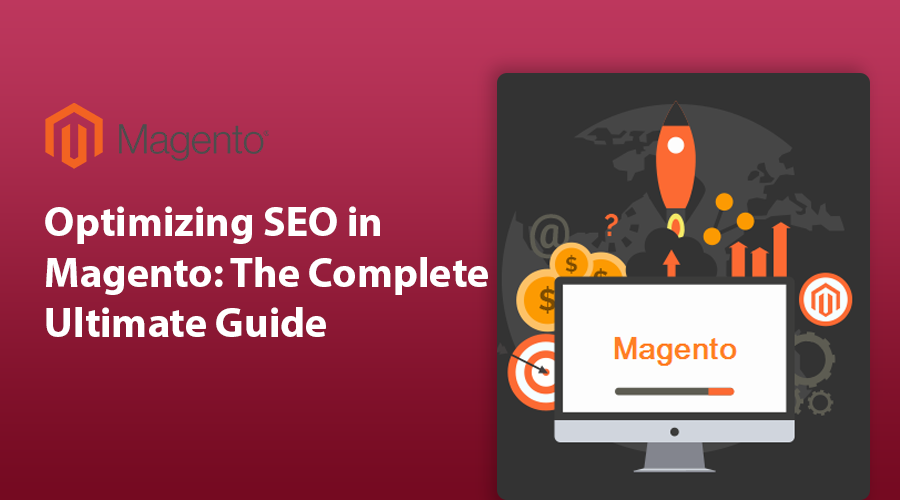
Magento, recently acquired by Adobe, is one of the most famous and popular e-commerce systems today. In fact, Magento is used by more than 250,000 active e-commerce sites, representing about 12% of all online retailers and 31.4% of the top 100,000 e-commerce sites, according to Salmon.
One of the most important aspects of any eCommerce company is search engine optimization. For Magento stores, Optimizing SEO in Magento is also a special factor to pay attention to.
You must never ignore on-page SEO. This will help your e-commerce Magento website be displayed in the search results list provided by the search engines to your potential customers. However, not everyone knows how to optimize SEO in Magento. This article will help you solve that problem.
Table of Contents
I. Define Magento and what are its uses of it?
Magento is a popular eCommerce platform that was created in the United States in 2008. With Adobe’s purchase in 2018, they were able to enhance their position even further. Magento is unquestionably a household name in the eCommerce world.

Magento should be considered if you own or assist in operating an eCommerce firm. The platform’s founders made it simple to use for regular people. This implies that you do not need to have any technical or developing experience.
The system, on the other hand, is dependable. The system becomes more sophisticated as you develop since it may manage millions of consumers. In most cases, firms will need to seek outside assistance. However, this is only true after the company begins to integrate several systems into its website.
II. Optimizing SEO in Magento
Ranking your Magento store on Google requires time, work, and patience, just like ranking any other website. As you’ll see, optimizing SEO in Magento for your website for search involves a lot of work.
However, ranking your store boils down to:
- On-page optimization: On-page SEO entails increasing the relevancy of your site by properly inserting keywords in various aspects of your site, as well as generating relevant material to please your users.
- Off-page optimization: Off-page strategies like establishing backlinks and garnering user-generated content are critical for increasing your store’s authority and trustworthiness in the eyes of Google and customers.
- Technical optimization: This includes sophisticated optimization techniques including structured data, picture optimization, and code minification.

The following are some of the tips that will help you optimize your Magneto store:
2.1. On-page optimization
The method of optimizing SEO in Magento on your website’s internal pages for improved search engine rankings is known as on-page SEO. It takes into account a variety of aspects, including the quality of your code, text and graphic content, site architecture and navigation, functionality, and more.
2.2. Optimize Title Tags and Meta description
Your rankings and click-through rate are directly influenced by the quality of your page title and meta description (CTR). As a result, it’s critical to create page names that appeal to both search engine crawlers and human users.
Most page names are now shortened in the SERPs since Google only displays the first 50–60 characters. Keep your titles under 60 characters to avoid being truncated. Additionally, in case the title is abbreviated, always strive to include your major keywords in the beginning. Early keywords are also preferred by search engines.
The meta description is the brief text that appears in the SERPs underneath the title and URL. Not only does your meta description need to appease Google crawlers with keywords, but it also has to be convincing for actual customers to click through to your business, much like the title tag.
2.3. Create SEO-friendly URLs and optimize Content

Magento SEO-friendly URLs are an essential aspect of how search engines rank a website. In fact, Google recommends that “a site’s URL structure be as basic as feasible.” Consider arranging your material such that URLs are built logically and in a way that people can understand.”
Aside from titles, meta descriptions, and URLs, everything in your website content – blog posts, product descriptions, the “about” page, and so on – should be optimized for primary and secondary (or “semantic,” i.e. related) keywords. You may target diverse keywords with varying user intent by constantly putting out such user content.
2.4. Off-page optimization
Off-page SEO refers to the things you may do outside of your website to improve your Google results. In essence, these efforts will increase your store’s credibility and authority in Google’s eyes.
2.5. Create authentic backlinks
Backlinks are external links that point to your website from other websites. In its ranking algorithm, Google takes into account the quantity, quality, and relevance of these links. To be honest, one of the most important variables that determine where your business will rank in the SERPs is the amount and quality of backlinks.
2.6. Analyze your competitor and promote your brand
Backlinks are important for SEO, but even unlinked brand mentions in high-authority magazines like Entrepreneur Magazine have a lot of clouts.
You may use a tool like SEMrush to examine your rivals’ referring domains and media mentions to figure out which newspapers you should target, and then modify your marketing approach to win press mentions for your own company.
III. Advanced SEO techniques

Other than the above-mentioned SEO tips optimizing SEO in Magento on your website by
- Page speed optimization through different SEO tools like Google PageSpeed Insight.
- Image optimization via compressing or uploading small-size files and adding alt text.
- Minification of CSS and JavaScript because it also takes up space and slows down your website. You can use free sources to minify your HTML such as Minify HTML CSS JS
- Using Accelerated Mobile Pages (AMP) to provide a fast experience to users over mobile phones.
- Configure caching so they can be accessed easily. You can enable built-in caching features in Magneto 2.
- Setting up Redirects in Magento.
- Optimizing Robots.txt to instruct search engine crawlers.
- Uploading XML sitemap
VI. Final Verdicts
That’s pretty much all you’ll need to get started on the correct track to getting your Magento store to rank on Google’s first page. Start with fundamental on-page optimization tactics, stay consistent with off-page optimization, and then use structured data, AMP, caching, and other sophisticated techniques like Magento multi-language SEO to level up your SEO game. Here are all the instructions on optimizing SEO in Magento. Hope you will be able to do this.












![[SALE OFF] Discount 30% All Premium Extensions On Christmas And New Year 2025 christmas-and-new-year-2025](https://landofcoder.b-cdn.net/wp-content/uploads/2024/12/christmas-and-new-year-2025-1-218x150.png)






